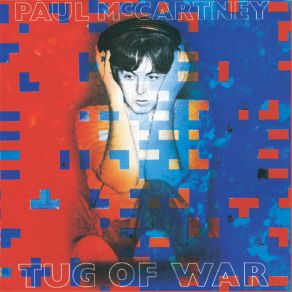Tug of War
Download links and information about Tug of War by Paul McCartney. This album was released in 1982 and it belongs to Rock, Pop genres. It contains 12 tracks with total duration of 40:52 minutes.

|
|
|---|---|
| Artist: | Paul McCartney |
| Release date: | 1982 |
| Genre: | Rock, Pop |
| Tracks: | 12 |
| Duration: | 40:52 |
| Buy it NOW at: | |
| Buy on iTunes $11.99 | |
| Buy on Amazon $11.49 | |
| Buy on Amazon $19.94 | |
| Buy on Amazon $59.99 | |
| Buy on Amazon $4.75 | |
| Buy on Amazon $73.60 | |
| Buy on Amazon $87.55 | |
| Buy on Amazon $34.88 | |
| Buy on iTunes $9.99 | |
| Buy on Songswave €1.15 | |
Tracks
[Edit]| No. | Title | Length |
|---|---|---|
| 1. | Tug of War | 4:22 |
| 2. | Take It Away | 4:14 |
| 3. | Somebody Who Cares | 3:19 |
| 4. | What's That You're Doing? | 6:19 |
| 5. | Here Today | 2:26 |
| 6. | Ballroom Dancing | 4:06 |
| 7. | The Pound Is Sinking | 2:53 |
| 8. | Wanderlust | 3:49 |
| 9. | Get It | 2:28 |
| 10. | Be What You See (Link) | 0:33 |
| 11. | Dress Me Up As a Robber | 2:41 |
| 12. | Ebony and Ivory | 3:42 |
Details
[Edit]Like 1970's McCartney, 1980's McCartney II functioned as a way for Paul McCartney to clear the decks: to experiment and recalibrate in the aftermath of his band falling apart. This means 1982's Tug of War is, in many ways, the very first Paul McCartney solo album, a record recorded not at home but in a studio, a record made without Wings and not co-credited to Linda, who nevertheless is present as a backing vocalist. McCartney recognized this album as something of a major opportunity, so he revived his relationship with Beatles producer George Martin and brought in several heavy-hitters as guests, including his hero Carl Perkins, his Motown counterpart Stevie Wonder, fusion star Stanley Clarke, prog rock refugees Eric Stewart and Andy Mackay, and his old bandmate Ringo Starr, whose presence was overshadowed by "Here Today," an elegy written for the murdered John Lennon. Tucked away at the end of the first side, "Here Today" is bittersweet and small when compared to all the show pieces elbowing each other for attention throughout Tug of War: the grave march of the title track, the vaudevillian "Ballroom Dancing," the stately drama of "Wanderlust," and sincere schmaltz of "Ebony and Ivory," the Wonder duet that helped turn this album into the blockbuster it was intended to be. As good as some of these numbers are — and they are, bearing an ambition and execution that outstrips latter-day Wings — much of the charm of Tug of War lies in the excess around the edges, whether it's the rockabilly lark of the Perkins duet "Get It," the later-period Beatles whimsy of '"The Pound Is Sinking," the electro-throwaway "Dress Me Up as a Robber," or the long, electro-funk workout of "What's That You're Doing?," a track that's a fuller collaboration between Paul and Stevie than "Ebony and Ivory." Such crowd-pleasing genre-hopping finds its apotheosis on "Take It Away," a salute to eager performers and the crowds who love them, which means it summarizes not only the appeal of Tug of War in general — it is, by design, a record that gives the people old Beatle Paul — but McCartney in general.